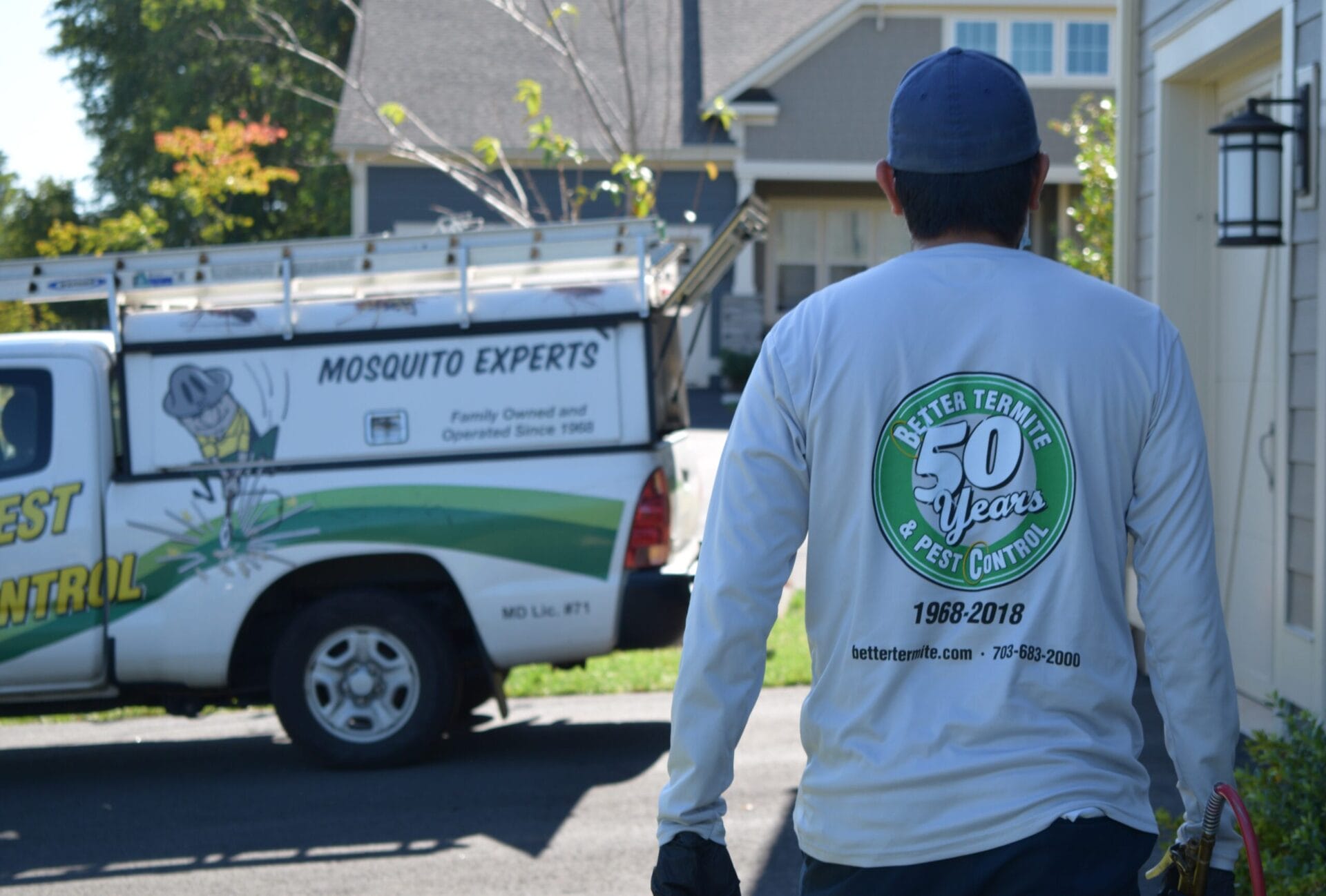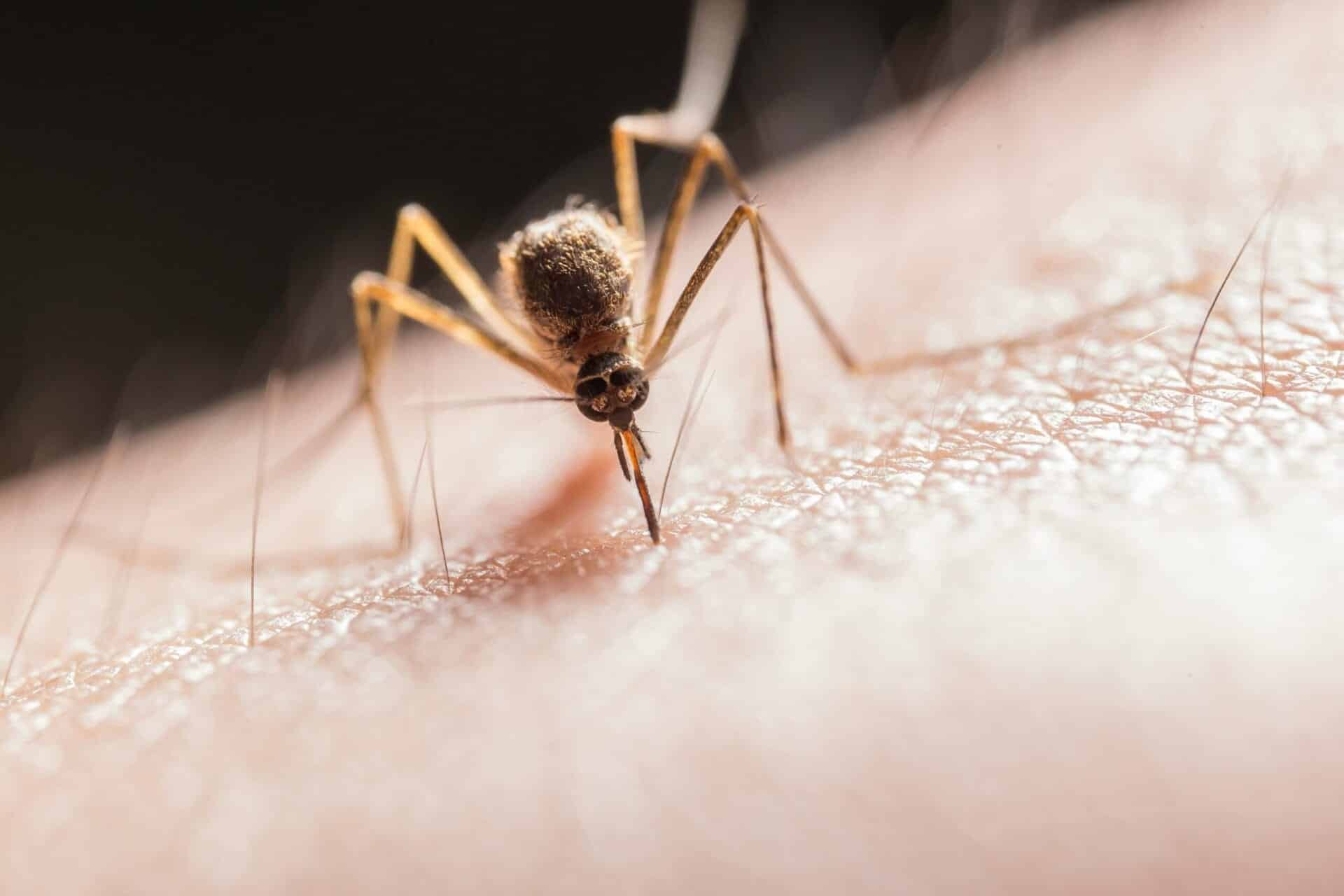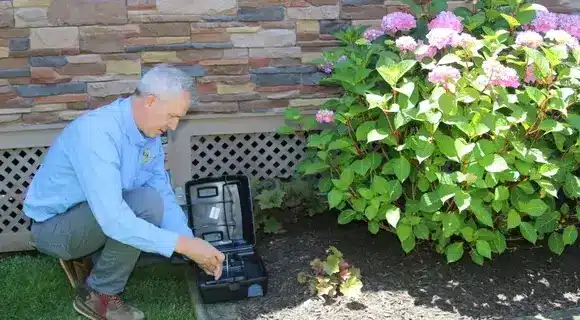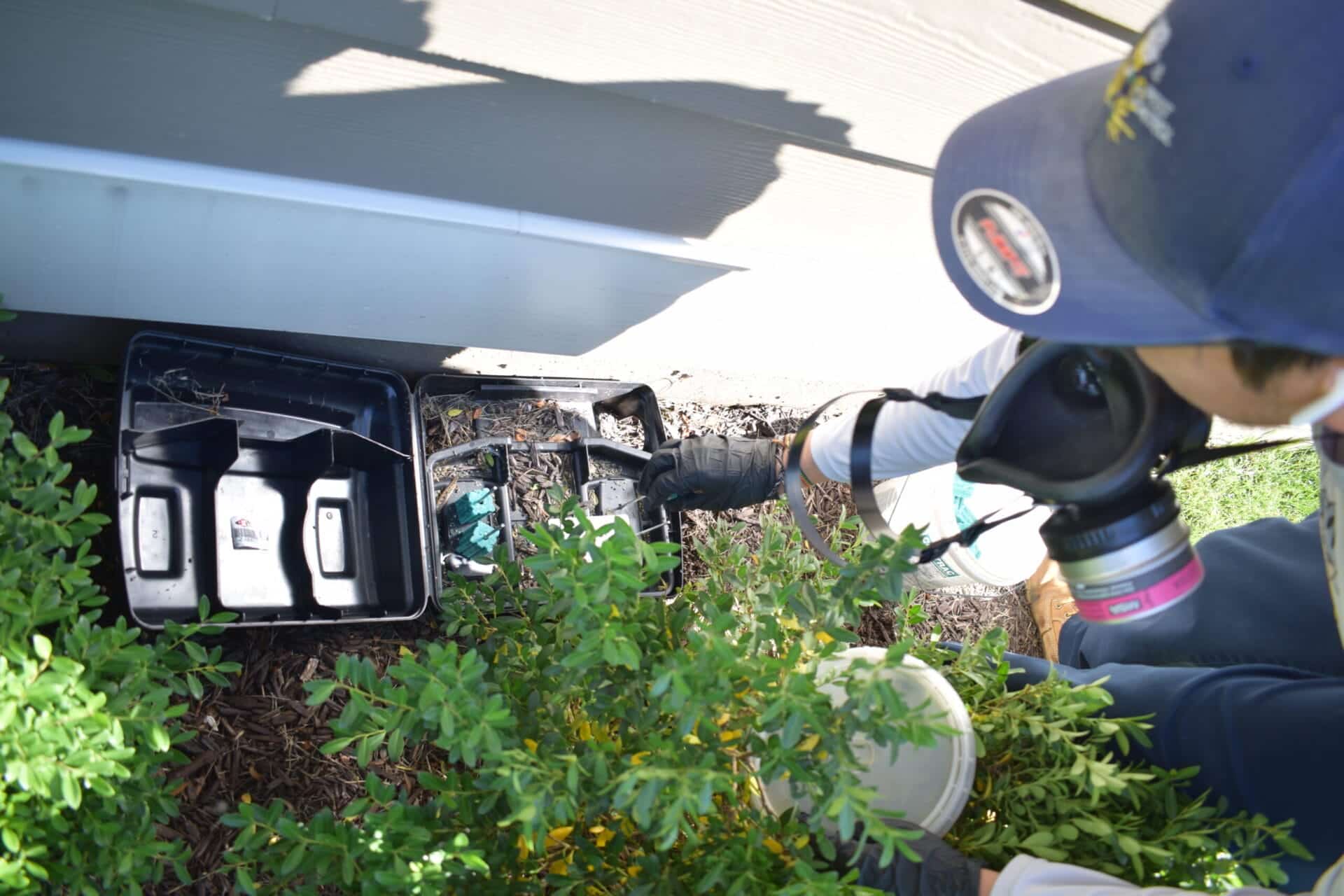


Quick Navigation
If you’ve spotted a small, dark insect scurrying across your kitchen counter, you might think it’s a cockroach. But many kitchen insects similar to cockroaches can fool homeowners into misidentifying what they’re dealing with. In my years as a licensed pest control technician since 2015, I’ve seen countless cases where customers called about “roaches” that turned out to be beetles, crickets, or other look-alikes.
Getting the identification right matters because different pests need different treatment approaches. While a German cockroach infestation requires immediate professional intervention, a few wood roaches that wandered in from your firewood pile might just need some basic exclusion work.
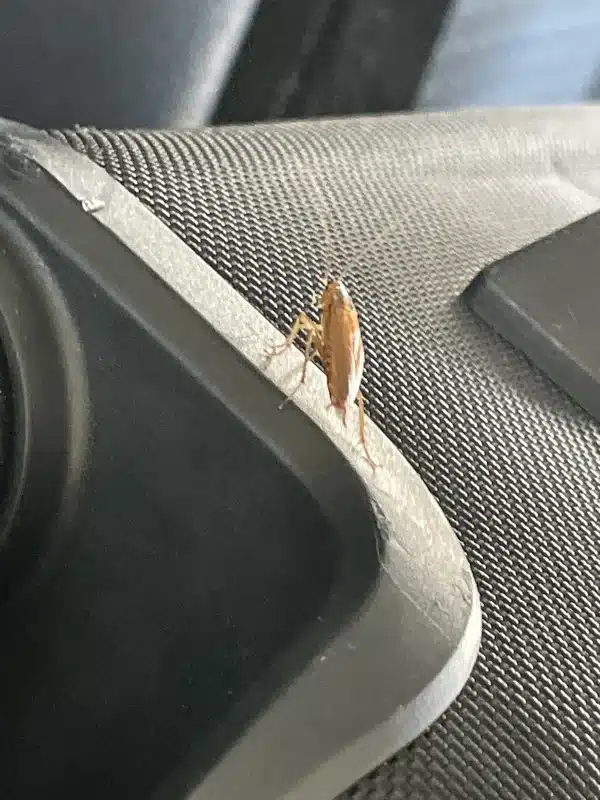
Before we dive into look-alikes, let’s cover the real cockroaches you might find in your kitchen. Throughout the DC metro area, I regularly deal with several species that love kitchen environments.
German cockroaches are the most problematic kitchen pests I encounter. These small roaches measure about half the size of your thumb and have two distinct brown stripes running down their backs. According to the University of Florida IFAS, a single female can produce over 300 offspring in her lifetime.
What makes German roaches especially troublesome is that they’re strictly indoor pests. They never invade from outside – they spread through human belongings like grocery bags and appliances. I’ve found infestations that started from a single egg case carried in on a used microwave.
🔍 Identification Tip: German cockroaches are the only species that reproduce exclusively indoors. If you see small roaches with two brown stripes, immediate professional treatment is critical since populations can explode from just a few individuals.
American cockroaches are much larger – about thumb-sized with a reddish-brown color and pale margins behind their heads. These “waterbugs” typically come up through floor drains, basement pipes, and sewer connections. They’re especially common in commercial kitchens and older homes with basement access.
Oriental cockroaches are dark, almost black insects that prefer cool, damp areas. I often find them in basements and crawl spaces, but they’ll move into kitchens during dry spells when they’re searching for water sources.
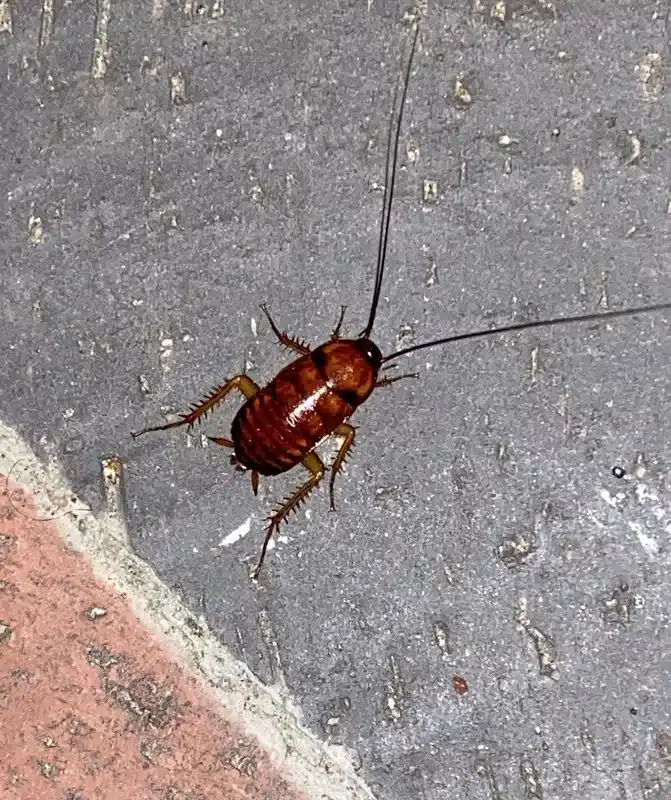
Over my 100+ customer interactions, I’ve learned that several insects get mistaken for cockroaches in kitchen settings. Here are the most common kitchen insects similar to cockroaches that cause confusion.
Camel crickets are probably the most frequent cockroach look-alikes I encounter. These wingless, hump-backed insects jump when disturbed, which immediately sets them apart from roaches. They love moisture and typically hang out in basements, but they’ll wander into kitchens during dry spells.
Unlike cockroaches, camel crickets don’t reproduce indoors in large numbers. They’re more of a seasonal nuisance than a true infestation problem.
Ground beetles have shiny, hard wing covers and shorter antennae compared to cockroaches. These outdoor predators sometimes wander inside through door gaps, especially when attracted to porch lights. They’re actually beneficial insects that eat other pests, so finding one or two isn’t cause for alarm.
Real water bugs are aquatic insects that lack the long antennae of cockroaches. They have raptorial front legs for catching prey and are much less common indoors than people think. Most “water bugs” people find are actually American or Oriental cockroaches.
June beetles are chunky, brown insects that make clumsy flights toward lights during late spring and early summer. Their cylindrical shape is quite different from the flattened profile of cockroaches, but in poor lighting, homeowners sometimes confuse them.
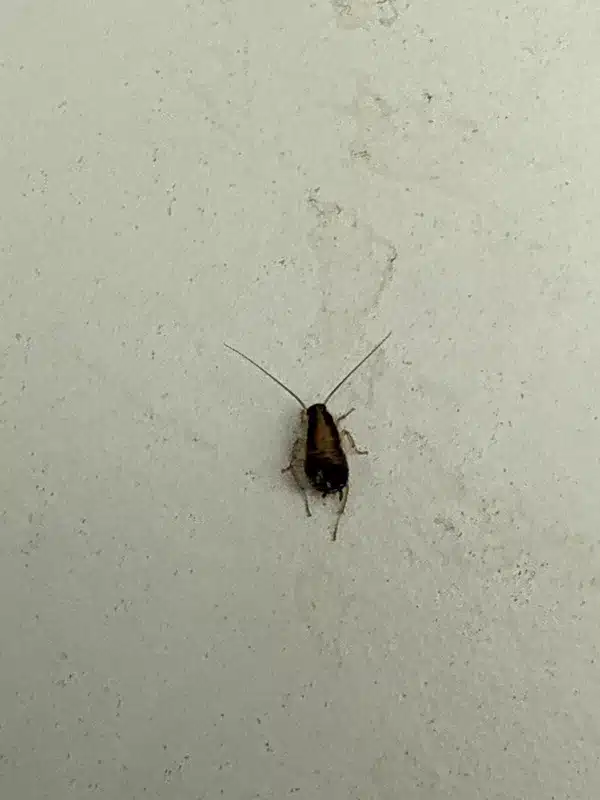
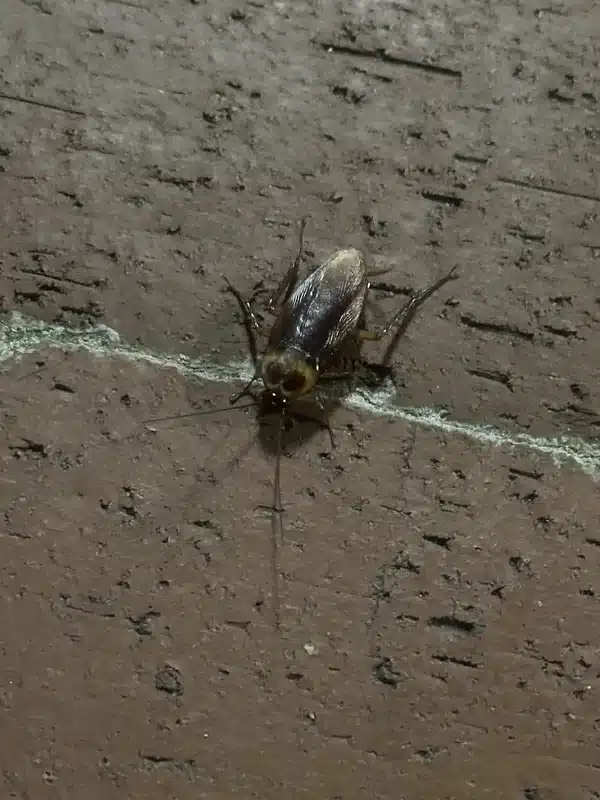
Understanding reproduction is key to controlling kitchen insects similar to cockroaches – especially when you’re dealing with real roaches. In my experience, the kitchen provides everything cockroaches need to multiply rapidly.
German cockroaches have the fastest reproduction cycle I deal with. The female carries her egg case for about three weeks, then deposits it in a warm, humid location. Each case contains 30-40 eggs, and the nymphs develop through six molts over 6-8 weeks.
What makes kitchen infestations so explosive is the ideal conditions. Temperatures around 85-90°F behind refrigerators and dishwashers, plus constant access to food crumbs and water leaks, create perfect breeding grounds. I’ve seen populations go from a few individuals to hundreds in just a couple months.
Kitchens offer several advantages for cockroach reproduction:
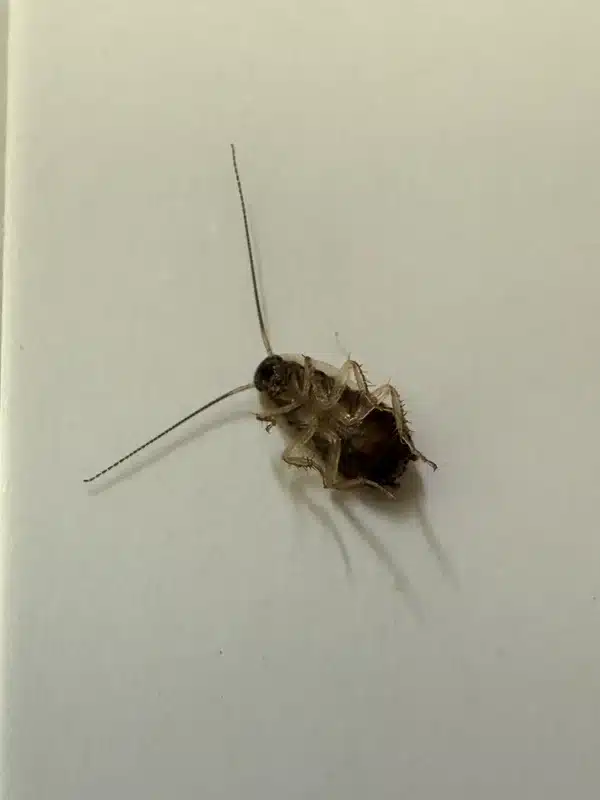
After working with hundreds of customers on pest identification and prevention, I’ve learned that stopping problems before they start is always easier than dealing with established infestations.
The most important step is removing what attracts pests to your kitchen. Cockroaches can survive on surprisingly little – even the grease film behind your stove provides enough nutrition for a small population.
Clean up food spills immediately, especially around appliances. Wipe down counters with degreasing cleaners, and don’t forget areas like toaster crumb trays and the space under your refrigerator.
Water is actually more critical than food for most kitchen insects similar to cockroaches. Cockroaches can survive much longer without food than without water.
According to University of Florida IFAS research, German cockroaches die within 12 days without water but can survive 42 days with only water present. This research highlights why moisture control is more critical than eliminating all food sources for effective cockroach control.
Fix any plumbing leaks, especially under sinks and around dishwashers. Wipe down wet surfaces after cooking, and consider using a dehumidifier in basements that connect to your kitchen area.
Exclusion work is crucial for preventing outdoor species from wandering inside. I always tell customers to focus on gaps larger than 1/16 inch – that’s all a German cockroach nymph needs to squeeze through.
Use silicone caulk around pipe penetrations, install door sweeps, and repair damaged window screens. Pay special attention to areas where utilities enter your home, as these are common entry routes.
When prevention isn’t enough, professional treatment becomes necessary. My approach varies significantly depending on whether we’re dealing with true cockroaches or look-alike insects.
For German roaches, I use an integrated approach that targets their biology. The customer needs to clear out cabinets and pull items away from walls so I can access cracks and crevices where roaches hide.
I apply non-repellent insecticides and growth regulators in tight spaces – behind outlet covers, along cabinet hinges, and around appliance motors. Bait stations go in areas with high activity, and I place monitoring traps to track population changes.
This process typically takes several months because we’re dealing with multiple generations. Early detection of nymphs is crucial for measuring treatment success.
For American and Oriental cockroaches, treatment focuses more on exclusion and perimeter work. I inspect basements, crawl spaces, and other damp areas where these species breed.
Treatment involves applying residual insecticides around entry points and addressing moisture issues. These species don’t reproduce as rapidly indoors, so control is usually faster than with German roaches.
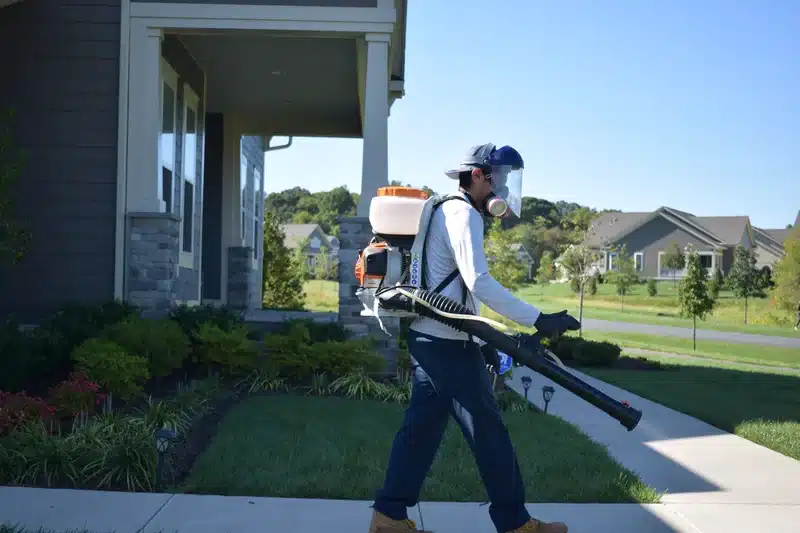
Some situations require professional expertise, especially when dealing with kitchen insects similar to cockroaches that turn out to be the real thing. In my experience, there are clear indicators that DIY approaches won’t be sufficient.
Call a professional if you’re seeing multiple insects, finding shed skins or egg cases, or noticing a musty odor in your kitchen. These signs typically indicate an established population that needs systematic treatment.
Also, correct identification is crucial. I’ve had customers spend months treating for the wrong pest because they misidentified what they were dealing with. A quick professional inspection can save you time and money by targeting the right approach from the start.
Cockroaches pose legitimate health concerns that make professional treatment worthwhile. The EPA identifies cockroach allergens as major asthma triggers, especially problematic for children.
These allergens become airborne and settle into fabrics and dust throughout your home. Even after eliminating the insects, allergen levels can remain elevated for months without proper cleanup.
🏠 Health Alert: Cockroach allergens can trigger asthma attacks and remain in your home for months even after pest elimination. Professional treatment addresses both live insects and the allergens they leave behind, protecting your family’s long-term health.
Our team understands the health implications and uses treatment methods that address both live pests and the allergens they leave behind. We’ve removed 9 of the harshest chemicals commonly used in our industry, choosing alternatives that are effective while being more suitable for indoor environments.
Living and working in the DC metro area for years, I’ve noticed distinct seasonal patterns with kitchen insects similar to cockroaches. Understanding these patterns helps homeowners know what to expect and when to be most vigilant.
During humid summer months, American and Oriental cockroaches are most active outdoors. Heavy rains often drive them through sewer overflows and basement drains into homes. This is when I get the most calls about large “waterbugs” appearing in kitchens.
Spring brings a different challenge – wood roaches. These outdoor species are attracted to porch lights during May and June, and they often hitchhike inside on firewood. Unlike true pest species, wood roaches don’t reproduce indoors and usually just need exclusion work.
Winter actually intensifies German cockroach problems because heating systems create ideal conditions for reproduction. Heated row houses in DC maintain perfect temperatures year-round, allowing continuous breeding cycles.
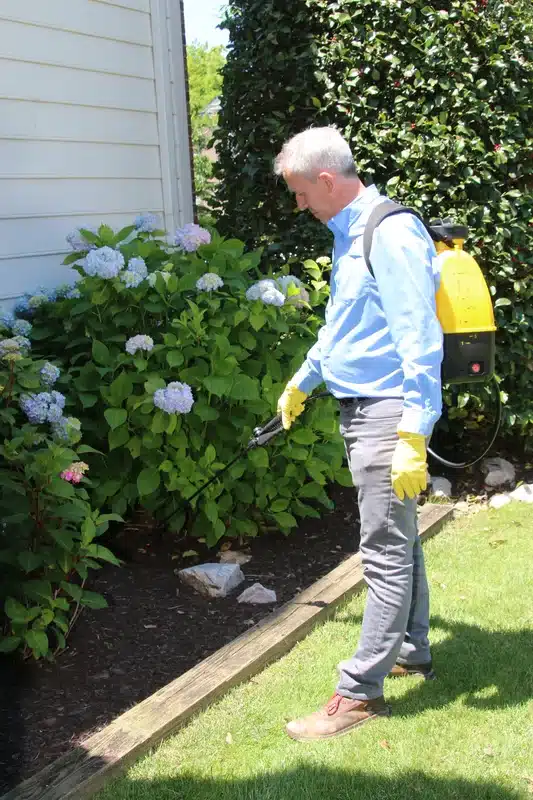
Successful control of kitchen insects similar to cockroaches requires ongoing management, not just one-time treatments. Based on my experience with over 100 customers, the most successful approaches combine multiple strategies over time.
Regular monitoring is essential. I recommend placing sticky traps in key locations – under sinks, behind refrigerators, and along cabinet bases. Check these monthly and document what you find. This helps you catch new problems early and track the success of your prevention efforts.
Quarterly maintenance becomes important for most homes. Most residual insecticides break down within 90 days, especially in humid kitchen environments. Regular reapplication maintains protective barriers around entry points.
Additionally, seasonal adjustments make a big difference. Switch to yellow “bug lights” during spring months to reduce wood roach attraction. Increase ventilation during summer to control humidity levels that favor reproduction.
At Better Termite & Pest Control, we’ve developed our treatment methods through decades of experience in the DC metro area. Our approach starts with proper identification because treatment effectiveness depends on targeting the right pest.
Our licensed technicians perform detailed inspections to distinguish between true cockroaches and look-alike insects. We use our 78-point inspection process to identify not just active problems, but conditions that might lead to future infestations.
For treatment, we’ve removed 9 harsh chemicals commonly used in residential pest control, choosing alternatives like Essentria and Alpine that are effective while being more appropriate for kitchen environments. Our research team continuously evaluates products to ensure we’re using the best available options.
We also provide unlimited callbacks because we understand that established cockroach populations often require follow-up treatments. If you’re still seeing activity between scheduled visits, we’ll return at no additional cost until the problem is resolved.
Whether you’re dealing with true cockroaches or kitchen insects similar to cockroaches, getting proper identification and treatment is crucial for protecting your family’s health and preventing infestations from spreading. Our team has the experience and tools to accurately diagnose your situation and implement effective, long-term solutions.
Don’t let pest problems get worse – early intervention is always more effective and less expensive than dealing with established infestations. Call us at 703-683-2000 or email info@bettertermite.com for a professional consultation and treatment plan tailored to your specific situation.
Don’t let kitchen bugs ruin your peace of mind. Get professional identification and customized treatment plans from our licensed technicians.
True cockroaches have long antennae, flattened bodies, and fast running behavior. Look-alikes like camel crickets jump when disturbed, while beetles have shorter antennae and harder wing covers. If you’re unsure, capture one in a jar and compare it to identification photos or contact a professional for accurate identification.
Most insects people call “water bugs” are actually American or Oriental cockroaches. True water bugs are aquatic insects with raptorial front legs and lack the long antennae of cockroaches. The confusion comes from cockroaches’ preference for moist areas like basements and floor drains.
Even one visible cockroach often indicates a larger hidden population, especially with German roaches. Start immediate sanitation efforts, place monitoring traps, and call a professional for inspection. German cockroaches reproduce so rapidly that early intervention is crucial for preventing major infestations.
German cockroaches reproduce fastest, with each female producing over 300 offspring in her lifetime. In ideal kitchen conditions with warmth and moisture, they can complete 3-6 generations per year. A single female can establish a colony of several hundred roaches within 8 weeks under optimal conditions.
DIY treatments might work for very small, newly established populations, but established German cockroach infestations typically require professional intervention. The key is proper identification, systematic treatment of hiding spots, and follow-up applications that target multiple generations.
Kitchens provide the three things cockroaches need most: food (grease films, crumbs), water (sink traps, appliance drips), and warmth (from appliances). The combination of consistent temperatures around 85-90°F behind refrigerators and dishwashers, plus high humidity from cooking, creates ideal breeding conditions.
Treatment timeline depends on the species and infestation size. German cockroach control typically takes 2-4 months with multiple follow-up visits because we’re targeting multiple generations. Larger roach species like American cockroaches often respond faster, usually within 4-6 weeks.
Yes, cockroaches pose several health risks. They produce allergens that trigger asthma, especially in children. They also carry bacteria like Salmonella and Staphylococcus on their bodies and in their droppings. The EPA identifies cockroach allergens as major indoor air quality concerns.
Wood roaches are outdoor insects that don’t reproduce indoors and are often attracted to lights. They’re typically larger and lighter colored than pest cockroaches. Unlike German or American roaches, wood roaches usually just need exclusion work rather than intensive treatment since they can’t establish indoor populations.
Call a professional if you’re seeing multiple insects, finding shed skins or egg cases, or noticing musty odors. Also contact a professional if you’re unsure about identification, as different pests require completely different treatment approaches. Early professional intervention is always more cost-effective than waiting.

With five years of hands-on experience in the pest control industry, George Schulz is a registered technician with the Virginia Pest Management Association and a proud third-generation professional in a family business that’s been protecting homes for over 57 years. He manages and trains a team of service pros while also leading internal research efforts—recently spearheading a deep-dive review of thousands of documents on pest control materials to hand-pick the most kid and pet friendly, most effective solutions tailored specifically for homes in the DC metro area. Read his bio.

